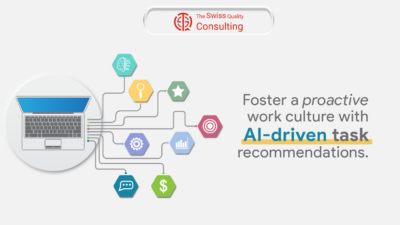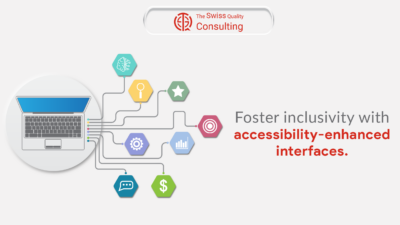Unlocking Success Through Strategic Comparison
In the ever-evolving landscape of business, achieving growth and success requires continuous adaptation and improvement. A key strategy that can propel your organization forward is benchmarking against industry standards. The quote, “Foster business growth with benchmarking against industry standards,” encapsulates the essence of this approach. In this article, we will explore the significance of benchmarking, its role in change management, and how it contributes to business success.
Understanding the Power of Benchmarking
Benchmarking is a systematic process of comparing an organization’s performance, practices, and results against those of industry leaders or competitors. It provides valuable insights into where an organization stands in relation to industry standards and identifies areas for improvement. Here are some key reasons why benchmarking is crucial:
1. Performance Evaluation
Benchmarking allows businesses to assess their performance objectively. By measuring key performance indicators (KPIs) and comparing them to industry benchmarks, organizations gain a clear understanding of their strengths and weaknesses.
2. Identification of Best Practices
One of the primary benefits of benchmarking is the opportunity to identify and adopt best practices from top-performing competitors or industry leaders. This knowledge transfer can lead to significant improvements in operations, processes, and outcomes.
3. Goal Setting and Strategic Planning
Benchmarking provides a basis for setting realistic and ambitious goals. It helps organizations establish achievable targets by aligning them with industry standards. This, in turn, informs strategic planning and resource allocation.
4. Continuous Improvement
The journey to business success is marked by a commitment to continuous improvement. Benchmarking serves as a catalyst for ongoing refinement of processes and practices. It fosters a culture of innovation and adaptability.
Embracing Change Management through Benchmarking
Change is an integral part of any growth strategy. Implementing changes effectively and efficiently can make or break an organization’s success. Benchmarking plays a crucial role in change management by providing a structured approach to identifying, implementing, and measuring changes.
1. Identifying the Need for Change
Benchmarking helps organizations recognize the need for change by highlighting performance gaps compared to industry standards. When a business falls behind in key metrics, it signals that change is necessary to remain competitive.
2. Defining Change Objectives
Once the need for change is identified, benchmarking helps organizations define clear objectives. By studying how top performers achieve their results, businesses can set specific, measurable, achievable, relevant, and time-bound (SMART) goals.
3. Selecting the Right Strategies
Benchmarking also aids in selecting the most appropriate strategies for change. It provides insights into what has worked for others, helping organizations make informed decisions about the changes they plan to implement.
4. Monitoring and Measuring Progress
Change management is an ongoing process, and benchmarking enables organizations to monitor and measure progress accurately. By regularly comparing their performance to industry benchmarks, they can gauge the effectiveness of the changes made.
Case Study: Leveraging Benchmarking for Business Success
To illustrate the transformative impact of benchmarking on business success, let’s examine a real-world case study:
Company ABC: A Journey to Excellence
Company ABC, a mid-sized manufacturing firm, faced growing competition in their industry. They realized that to remain competitive and achieve sustainable growth, they needed to improve their operational efficiency. The management decided to embark on a benchmarking journey.
Step 1: Identifying Key Metrics
The first step for Company ABC was to identify the key metrics they needed to improve. They chose to focus on cycle time, defect rate, and cost per unit, as these were critical factors affecting their competitiveness.
Step 2: Benchmarking against Industry Leaders
Company ABC conducted extensive research and benchmarked their performance against industry leaders known for their efficiency. They found that their cycle time was 20% higher, defect rate was 15% higher, and cost per unit was 10% higher than the industry benchmarks.
Step 3: Implementing Changes
Armed with this data, Company ABC embarked on a journey of change. They invested in advanced automation technology to reduce cycle times, implemented rigorous quality control measures to lower the defect rate, and optimized their supply chain to reduce costs.
Step 4: Ongoing Monitoring
Company ABC didn’t stop at implementing changes. They continued to monitor their performance and regularly benchmarked themselves against industry standards. This allowed them to fine-tune their processes and stay competitive.
Results:
Within two years of embracing benchmarking as a part of their strategy, Company ABC achieved remarkable results:
Cycle time reduced by 18%.
Defect rate decreased by 14%.
Cost per unit decreased by 9%.
Market share increased by 12%.
Company ABC’s success story serves as a testament to the power of benchmarking in fostering business growth and success.
Utilizing Technology: Generative Artificial Intelligence (GAI)
As we navigate the era of benchmarking and change management, it’s essential to leverage cutting-edge technologies to enhance the process. Generative Artificial Intelligence (GAI) can be a valuable tool in this regard.
The Role of GAI in Benchmarking
Generative Artificial Intelligence can analyze vast amounts of data from various sources, including industry benchmarks and a company’s own performance metrics. It can identify patterns, trends, and correlations that may not be immediately apparent to human analysts.
Example: Predictive Analytics
One practical application of GAI in benchmarking is predictive analytics. By analyzing historical data and industry benchmarks, GAI can predict future performance trends and potential areas of improvement. This foresight enables organizations to proactively address issues and seize opportunities.
Conclusion
In conclusion, the quote “Foster business growth with benchmarking against industry standards” encapsulates a fundamental strategy for achieving business success. Benchmarking empowers organizations to objectively assess their performance, identify areas for improvement, and drive change effectively.
Change management and benchmarking go hand in hand, with benchmarking providing the data-driven foundation for successful change initiatives. Real-world case studies, like Company ABC, demonstrate how benchmarking can lead to tangible improvements in performance and competitiveness.
As we move forward, it’s essential to embrace technologies like Generative Artificial Intelligence to enhance the benchmarking process and gain deeper insights. By fostering a culture of continuous improvement and leveraging benchmarking against industry standards, businesses can unlock their full potential and thrive in an ever-changing business landscape.
#Benchmarking #BusinessGrowth #ChangeManagement #GenerativeAI #BusinessSuccess #ManagementConsulting #LeadershipSkills #ProjectManagement























